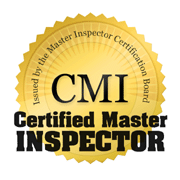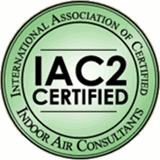Massachusetts Home Inspections YOUR INVESTMENT IS MY CONCERN

Asbestos Hazards

Asbestos has long been recognized as a serious respiratory hazard and a carcinogen affecting both the respiratory and gastrointestinal systems. It breaks down into microscopic fibers that can become airborne, leading to exposure when inhaled. Due to their small size and unique shape, these fibers can remain suspended in the air for extended periods and easily penetrate body tissues when inhaled or ingested. Notably, asbestos fibers are far too small to be seen without a powerful microscope—an average human hair is approximately 1,200 times thicker than an asbestos fiber.
Asbestos poses a serious health risk when inhaled. Detecting its presence in the air is difficult because it does not cause immediate symptoms like coughing or irritation. In many cases, asbestos-related illnesses take 10 to 40 years to develop. These diseases are challenging to treat and, in most cases, impossible to cure.
One common asbestos-related disease is asbestosis, which causes lung inflammation and scarring. Mesothelioma, a rare but aggressive cancer, affects the outer lining of the lungs and abdomen. Asbestos exposure has also been linked to other forms of lung cancer. These diseases are often extremely painful.
Because exposure occurs when asbestos fibers become airborne and are inhaled, the best way to prevent harm is to keep asbestos-containing materials intact and undisturbed—preventing the release of fibers into the air.
Due to serious health risks, asbestos is no longer used in most applications. It becomes especially hazardous when asbestos-containing materials are disturbed, releasing microscopic fibers into the air. Safely handling, detecting, encapsulating, or removing asbestos requires a trained professional in Massachusetts who is certified to work with asbestos.
Here is what my clients have to say about my home inspection services:
Press F5 (on your keyboard) for additional testimonials
Buying a home is arguably the most important, exciting and nerve-wracking purchase a person will ever make. This is the reason you need a great home inspector, and Dave Valley is just that. He is empathetic – he understands and appreciates the various emotions a potential home-buyer goes through. Most importantly, Dave provides you with objective information so you can make the most informed decision possible.
It was a pleasure working with Dave – he contains all the qualities that make a great home inspector – he is the consummate professional, prompt, courteous, meticulous in his detail and honest. Dave was reasonably priced – in fact Dave charged me the same amount I spent 10 years earlier on a smaller house and provided a far better work product.
Prompt
I arrived at the house at the agreed upon time on a cold and nasty day, and found Dave outside inspecting the exterior of the home. He was already a half hour into his inspection – I think this exemplifies and is symbolic of the fact that Dave is respectful of his client’s time.
Courteous
Dave was pleasant to deal with, personable and thoughtful not only to his client but also to the buyer’s real estate agent.
Detail-oriented
Dave spent almost four hours in his investigation of a 2,000 square foot house. He answered all my questions and reviewed every observation he had with me. David provided a detailed report, and encouraged me to call and email him to discuss the report and to ask questions.
Conclusion
The highest compliment I can give Dave is to say that I would use him again and will encourage and recommend him to others.
Michael S. Giaimo














